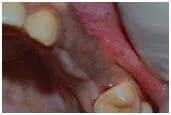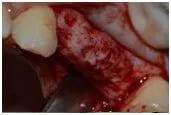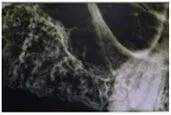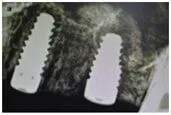Sinus Grafting
Maxillary Sinus Grafting
The maxillary sinuses are behind your cheeks and on top of the upper teeth. Sinuses are likeempty rooms that have nothing in them. Some of the roots of the natural upper teeth extend up intothe maxillary sinuses. When these upper teeth are removed, there is often just a thin wall of boneseparating the maxillary sinus and the mouth. Dental implants need bone to hold them in place. Whenthe sinus wall is very thin, it is impossible to place dental implants in this bone.


On examination after 4-5 months, it was observed that the bone in the region suggested for implant was deficient and insufficient to support the dental implant. A sinus graft was performed prior to placing the titanium dental implant and 3 months later zirconia crowns were cemented on the dental implant abutment. Now, our young patient is happy with his new molars which have restored his chewing function and enable him to munch on all his favorite foods.


Frequently Asked Questions
A sinus lift is done when there is not enough bone height in the upper jaw, or the sinuses are too close to the jaw, for dental implants to be placed. There are several reasons for this
- Many people who have lost teeth in their upper jaw — particularly the back teeth, or molars — do not have enough bone for implants to be placed. Because of the anatomy of the skull, the back of the upper jaw has less bone than the lower jaw.
- Bone may have been lost because of periodontal (gum) disease.
- Tooth loss may have led to a loss of bone as well. Once teeth are gone, bone begins to be resorbed (absorbed back into the body). If teeth have been missing for a long time, there often is not enough bone left to place implants.
- Tooth loss may have led to a loss of bone as well. Once teeth are gone, bone begins to be resorbed (absorbed back into the body). If teeth have been missing for a long time, there often is not enough bone left to place implants.
- The maxillary sinus may be too close to the upper jaw for implants to be placed. The shape and the size of this sinus varies from person to person. The sinus also can get larger as you age.
Sinus lifts have become common during the last 15 years as more people get dental implants to replace missing teeth.
- Crestal sinus lifts are necessary when the maxillary sinus gets in the way of implant placement.
- The advantage of a crestal sinus lift is that implants can be placed at the same time and it is minimally invasive.
- In performing the procedure, the site is prepared to receive the implants and the sinus membrane is elevated at the same time. Bone graft is placed into the space created prior to implant placement.
- The graft will consolidate with the surrounding bone and integrate with the implants over the course of several months. Once healed, the implants may be restored with abutments and crowns to provide esthetics and function.
Synthetically derived graft material such as hydroxyapatite is used for sinus grafting.


